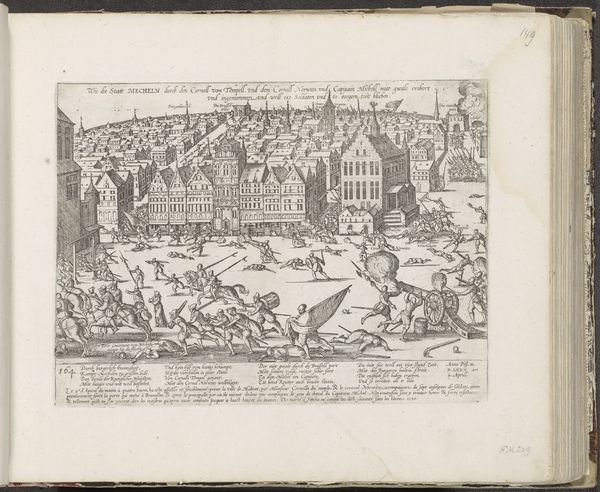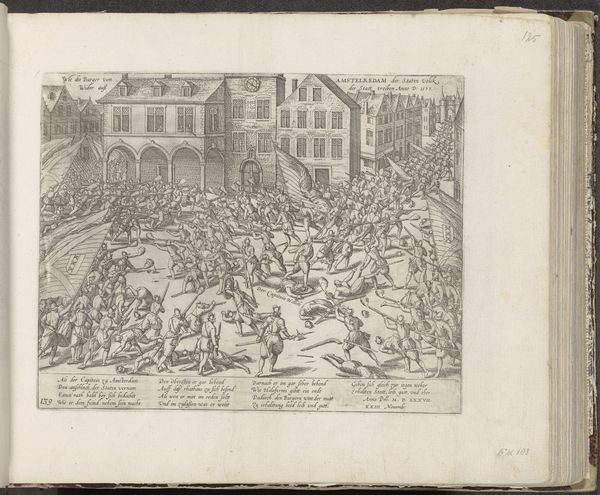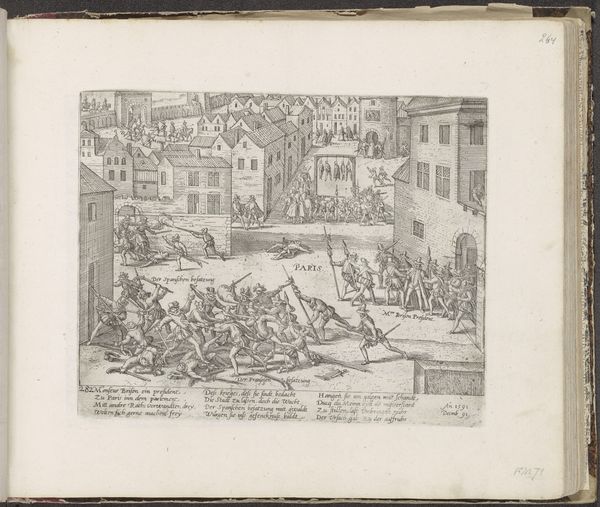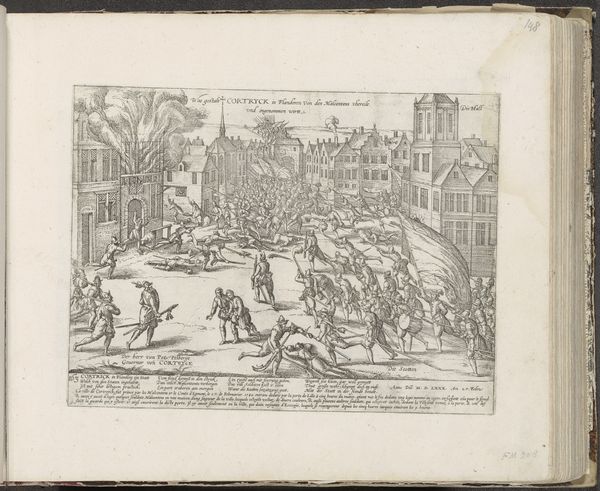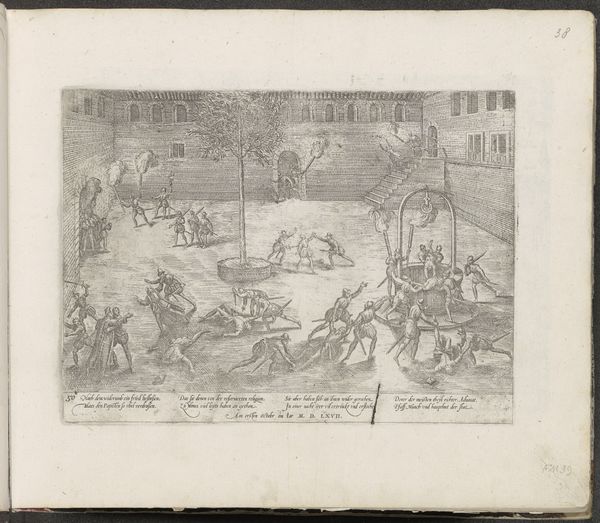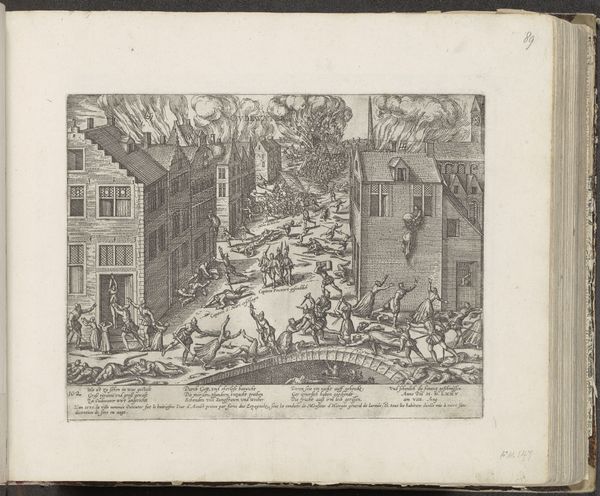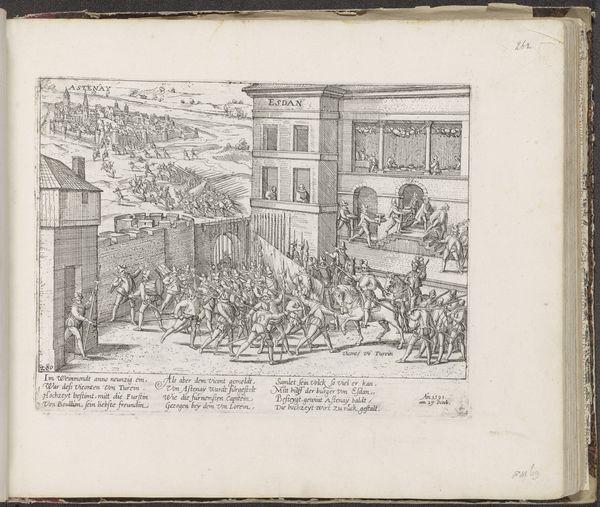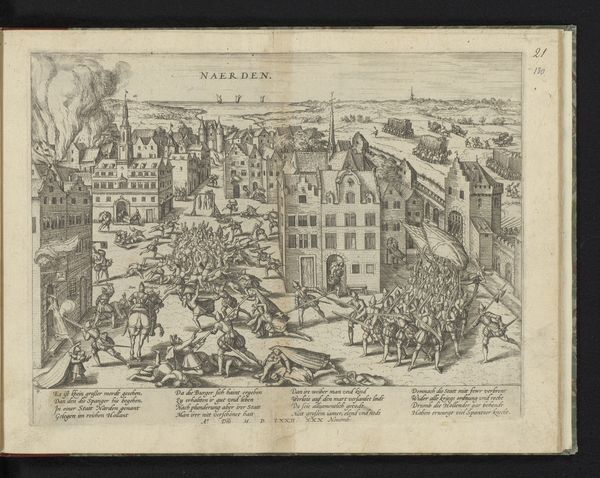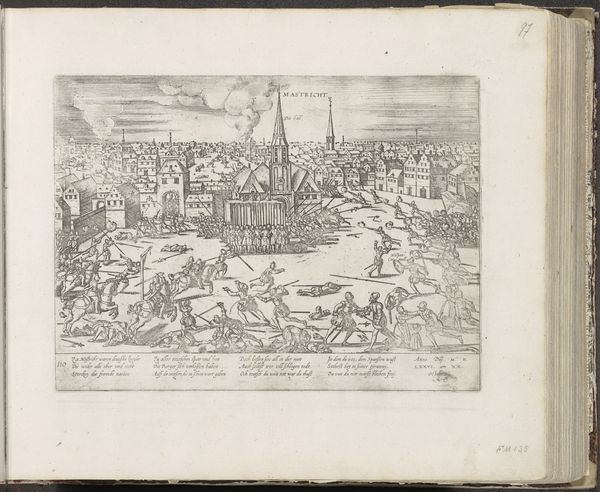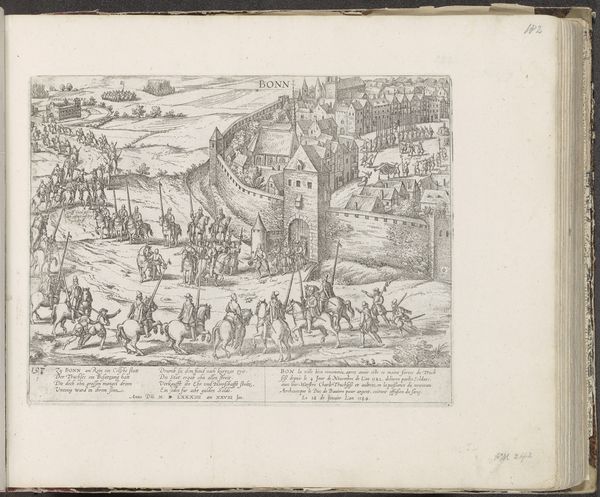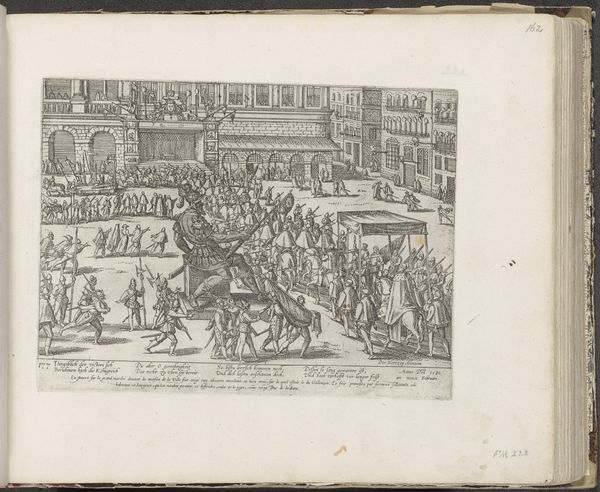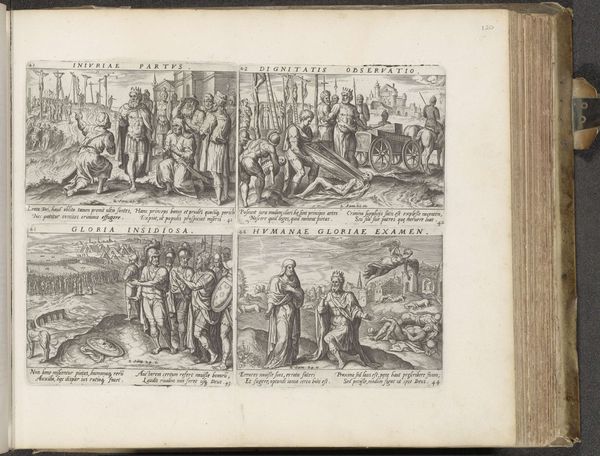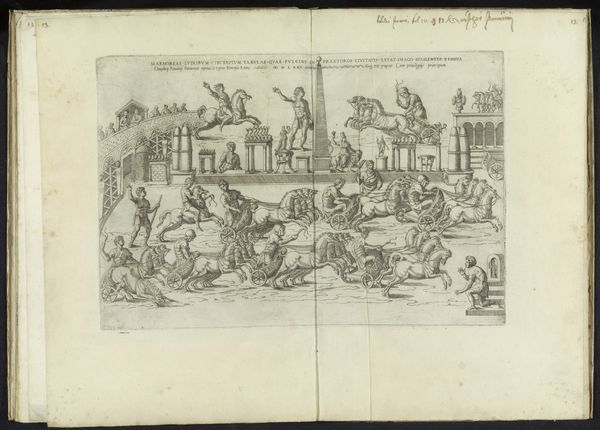
graphic-art, print, engraving
#
graphic-art
#
narrative-art
# print
#
cityscape
#
history-painting
#
northern-renaissance
#
engraving
Dimensions: height 202 mm, width 272 mm
Copyright: Rijks Museum: Open Domain
Editor: Here we have Frans Hogenberg’s engraving, “Franse Furie te Antwerpen, 1583,” dating from around 1583 to 1585. It’s a rather intense, chaotic scene. What strikes you when you look at this print? Curator: The density of figures immediately draws the eye, doesn't it? But it's not mere chaos; Hogenberg carefully utilizes symbols to narrate this historical event, "The French Fury." Look closely – what repeated imagery do you notice? Editor: I see lots of fighting figures, of course, and a fire, but are those bodies on the ground? What does it mean? Curator: Yes, the bodies suggest a massacre, a moment of extreme violence. The burning building also signifies destruction and chaos, common symbolic elements within depictions of conflict. Given the title, and considering cultural memory, it invites us to recall the sacking of Antwerp by French troops, when the mutinous soldiers looted the city. Hogenberg, working in the Northern Renaissance style, captured a scene heavy with meaning for its intended audience. Why do you think prints like this were so popular? Editor: Maybe they helped people remember events, or to warn them about violence? It's definitely a stark warning. Curator: Precisely. It visually encoded a historical trauma, allowing viewers to engage with and transmit a shared understanding of this destructive event and its cost for generations to come. It’s cultural memory, visualized. Editor: That’s fascinating – seeing how images became a way to share history and also collective feelings. I'll definitely look closer at historical prints from now on.
Comments
No comments
Be the first to comment and join the conversation on the ultimate creative platform.
